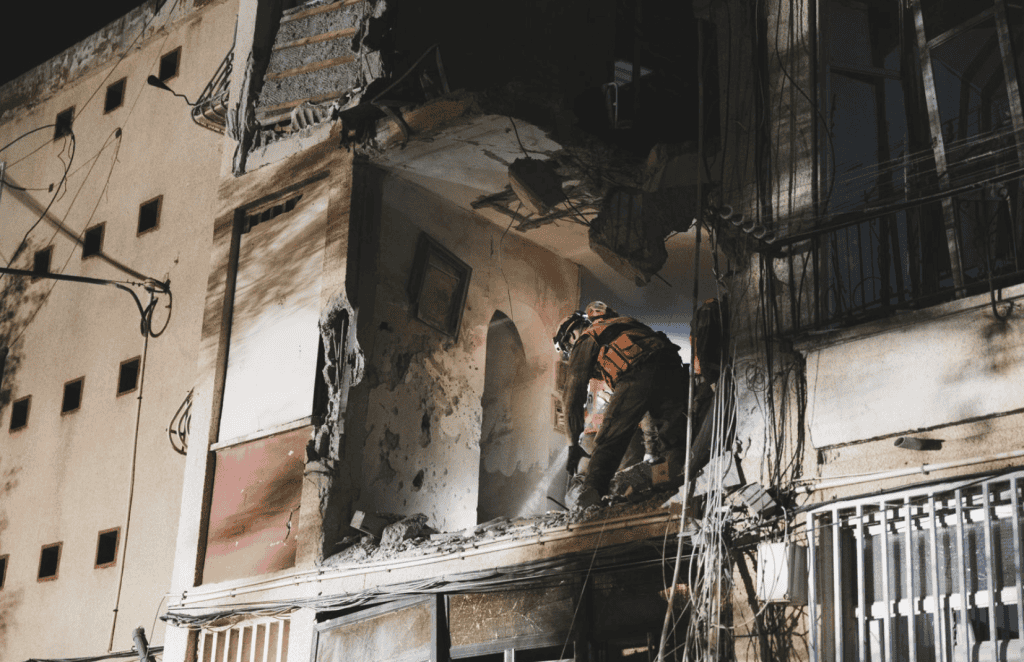
The Israel Defense Force conducted its first large raid into the Gaza Strip overnight between Wednesday and Thursday. The Givati brigade, which has been training for specialized urban warfare over the last week, led the assault. The raid included tanks and vehicles, as well aa armored D-9 bulldozers which opened a path through a berm on the border.
“During the activity, soldiers located and struck numerous terrorists, terror infrastructure and anti-tank missile launch posts, and operated to prepare the battlefield,” the IDF said in a statement. The forces returned after the raid, there were no IDF casualties, according to the IDF.
The latest advance by Israel served as a table setter for the next phase of combat. Overnight marked the first real ground operation since Oct. 7 when Israel had to rush soldiers and units south to stop the Hamas invasion and massacre that killed 1,400 civilians and soldiers that day. Since that day, there has been growing pressure on Israel to begin a ground incursion. Officers and politicians have said Israel will defeat Hamas. However there is also pressure from the international community to get humanitarian aid into Gaza first.
Israel has called on Gazans to leave northern Gaza and head south. On Oct. 26 the IDF noted that its Intelligence Directorate (J2) has made numerous calls to civilians, encouraging them to leave. However, Israel asserts that they have learned from these calls that Hamas is trying to prevent the civilians from leaving in an effort to use them as “human shields.” This came as the Hamas-run health ministry in Gaza claimed more than 7,000 people have been killed in almost three weeks of Israeli airstrikes. President Joe Biden has said he has no confidence in the Palestinian death count.
Israel also continued airstrikes on the evening of Oct. 25-26. More than 250 terror targets were struck overnight. Israel said this included “terror infrastructure, operational command centers, tunnel shafts, and rocket launchers placed in the heart of civilian areas that fired toward Israeli territory throughout the war.” Israel also carried out a strike from its navy at sea, targeting a surface-to-air missile launch post near Khan Yunis in the southern Gaza Strip.
Meanwhile, the Gaza Division and the Directorate of Borders and Buffer Zone in Israel’s Ministry of Defense and the Technological and Logistics Directorate have actively worked to repair the border fence along the Gaza Strip. This “smart fence” is supposed to have a plethora of sensors and provide “eyes” into Gaza. However, Hamas attacked it at 29 points on Oct. 7 and damaged many parts of it. The sites of the attack “were searched and cleared of explosive devices alongside the installation of new systems in the area,” the IDF said. “We have all enlisted for the benefit of the mission and we will operate at all hours of the day and in any area that is required. We will continue to work together in cooperation to strengthen control of the area,” one of the officers involved in the maintenance said.
On the home front, Israel has tried to increase funding for the border communities that were evacuated in the first weeks of the war. Some 200,000 Israelis are now staying in hotels and guest houses around Israel. The communities on the border also need repairs and need new safe rooms and other protections. In addition cities such as Ashkelon near Gaza, targeted with hundreds of rockets, require more safe rooms. The Home Front command in Israel and the defense ministry both gave briefings on Thursday. The government continued to emphasize for civilians to take shelter when there are sirens. Several rockets have fallen on buildings in the last day even though the rocket fire from Gaza has reduced greatly. Israel has not released data on the number of rockets fired, unlike in previous wars. Reports say the U.S. is sendingtwo Iron Dome batteries to Israel. These batteries were acquired by the U.S. army three years ago.
The IDF also said it continued to target Hamas commanders throughout the day. The IDF said that the Deputy Head of Hamas’ Intelligence Directorate, “who was responsible for planning the Oct. 7th massacre together with Yahya Sinwar,” was killed. Sinwar is the most senior leader of Hamas in Gaza. Most other Hamas leaders reside abroad, such as in Doha.







